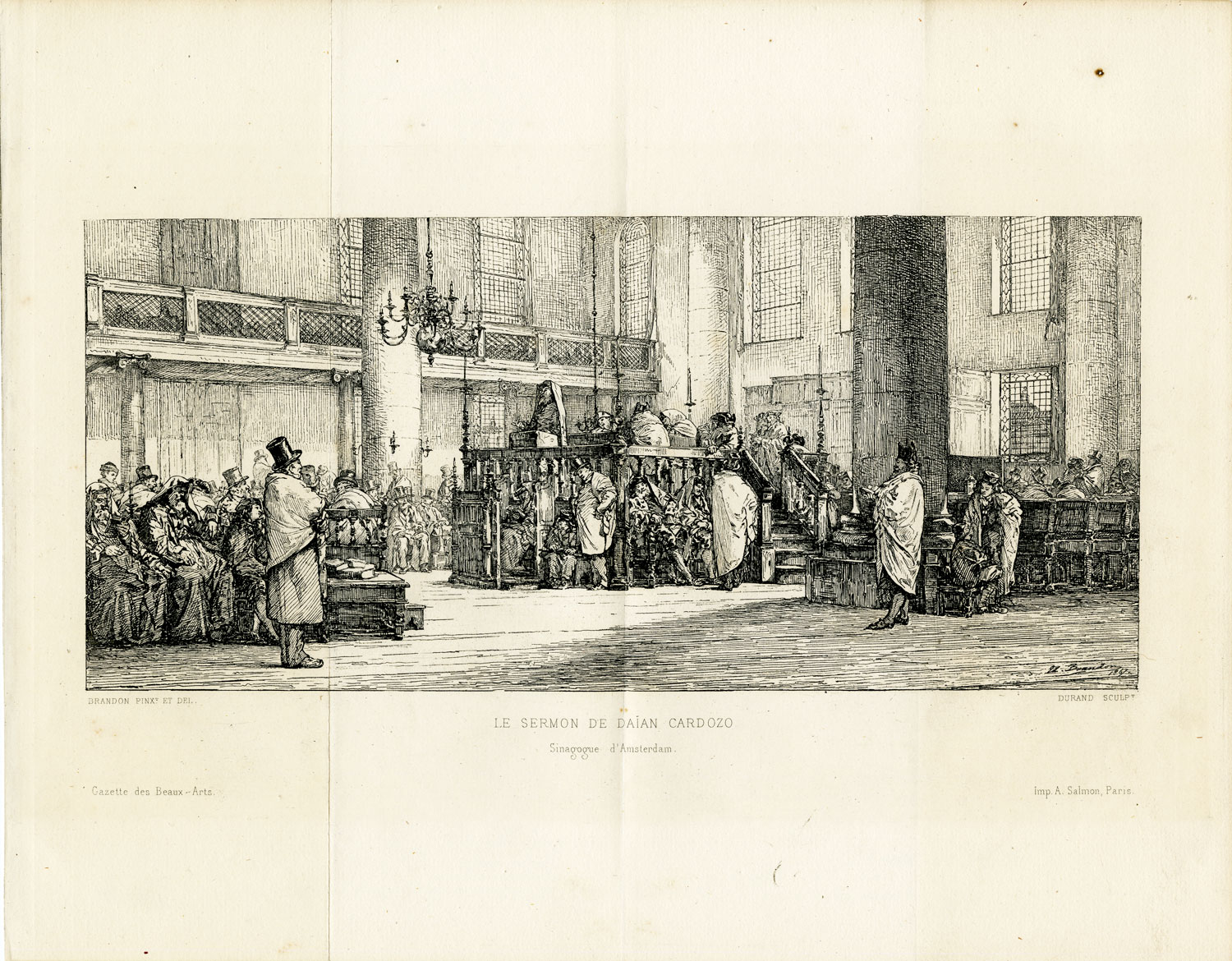This 19th-century view of the famous Portuguese Synagogue in Amsterdam shows the interior from a worshiper’s perspective, as opposed to the broad view seen in illustrations of the structure’s 1675 dedication, as well as in other early depictions. The artist puts himself to one side, between the first and second of the great columns that support the women’s gallery and define the monumental space. His view (and ours) is in the front of the men’s benches that run parallel to the colonnade and face inward to the open space between the bimah, from which preacher David de Jahacob Lopez Cardozo (1808–1890) delivers his sermon, and the ark, out of sight to the left. This layout—ark and bimah at opposite ends of the interior with two sections of seating facing each other separated by an aisle—is often referred to as the bi-polar plan, and is traditional for Sephardi synagogue architecture. Across the sanctuary, we can see the women’s gallery opposite.
The Sephardi Jewish community of Amsterdam acquired the site for the Portuguese Synagogue on December 12, 1670. Construction began on April 17, 1671, under the direction of Elias Bouwman (1636–1686), who had previously built the Great Synagogue of the Ashkenazi community of Amsterdam. The new house of worship was dedicated on August 2, 1675.
During the era when David de Jahacob Lopez Cardozo was associated with the Portuguese Synagogue, the synagogue looked very much as it did at the time of its original construction. Cardozo studied at a young age at the congregation’s beth midrash (house of study) Etz Hayim, an associated building in the synagogue complex. He served the community both as a rabbinical judge (dayan) and preacher.
